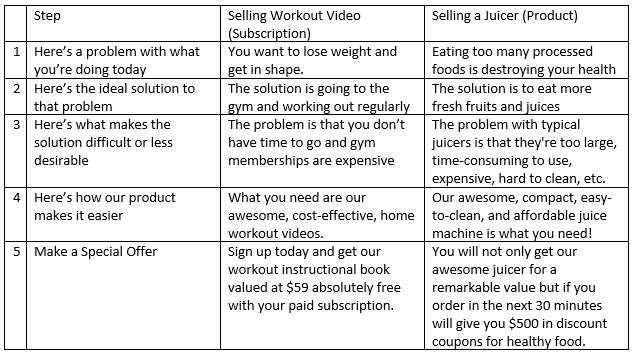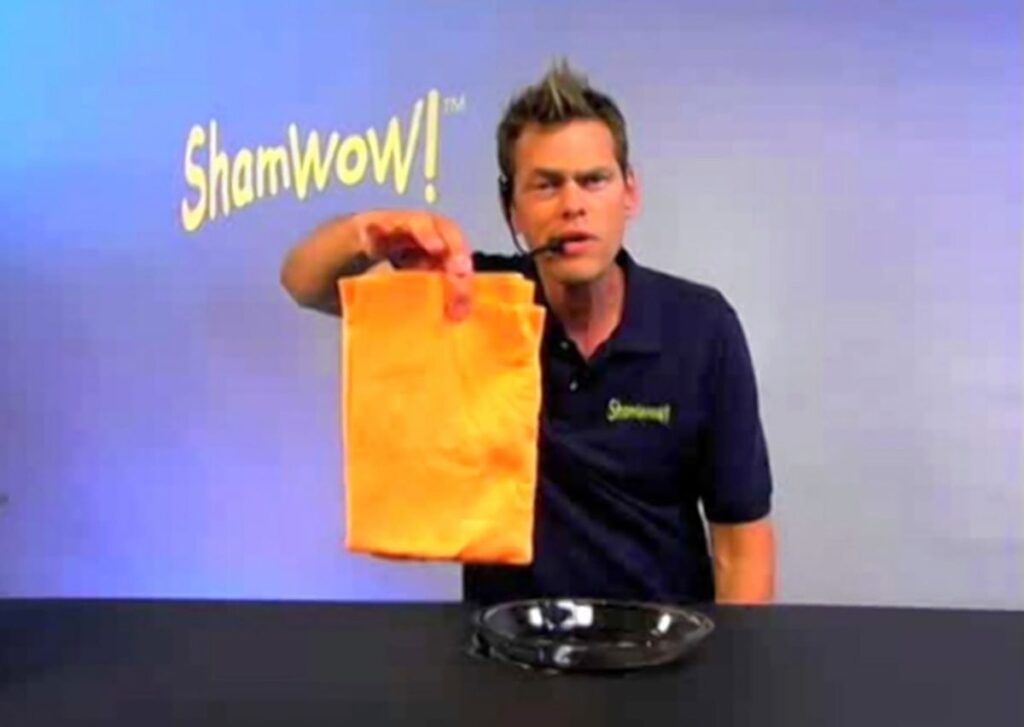Marketers specifically create infomercials to present a product or service in a way that convinces the viewer to purchase it. These commercials are typically longer than traditional ones, often running for 30 minutes or more, and they often use persuasive techniques and emotional appeals to convince viewers to make a purchase.
One of the main characteristics of infomercials is that they often present products or services as being able to solve a specific problem or meet a particular need. For example, an infomercial might show a kitchen gadget as being able to chop vegetables easily or a cleaning product as removing tough stains. These claims are often supported by demonstrations or testimonials from satisfied customers.
Another common feature of infomercials is the use of limited-time offers or special discounts to encourage viewers to make a purchase. These offers might include gifts or discounts for ordering within a specific time frame, and they often create a sense of urgency to encourage viewers to act quickly.
Infomercials have been a popular marketing tool for decades and continue to be widely used today. While many people may find them annoying or manipulative, others enjoy the entertainment value of these commercials and are willing to purchase the solutions based on the information and claims presented in the infomercial.
Infomercials, like the classic Shamwow infomercial, are an example of how structure and technique can have a huge effect on how a user or prospect is driven toward taking a specific action like clicking a buy button.
Infomercials follow a specific structure that any small business can use to drive action, but few businesses ever consider using it when they pitch their product or service. In this post, we’ll describe the structure and give you examples of how you can use it in your business.
The infomercial structure is effective because
The process involves drawing the prospect in, establishing a level of trust, removing any doubts, and convincing them that the time to buy is now. The process can be broken down into five steps.

1. Explain The Universal Problem
The process starts with knowing your user or prospect. Once you know your customer, you should be able to understand their needs and problems.
In this step, you need to alert the user or prospect to a common problem by Illustrating the pain associated with their current state.
Marketers often use images or video where appropriate that exaggerates the problem, such as a ladder balancing precariously on an uneven surface, a person grabbing their back and grimacing in pain, etc.
“Are you losing business because when you are on a sales call, you don’t have the key customer or product information you need
the moment?” in
2. Share The Ideal Solution
In this step, outline the aspirations or desires of a perfect future. Does your user or prospect want to become rich, beautiful, happier, save time, etc?
“Wouldn’t it be nice if there was a solution where your mobile device could access your back-office database, so you can always have access to customer and product information from anywhere?”
In this step, you want the user or prospect to be able to acknowledge and relate to the problem and solution. Often after the problem is clearly presented, it is very clear, even without stating the obvious, what the ideal solution would look like.
3. Explain Why The Ideal Solution Is Hard To Achieve Or Is Undesirable
In this step, highlight the risk or uncertainty associated with the solution framing the need for a better solution. Does it cost too much? Will it take too much time?
“Creating a custom app to connect your mobile device to your back-office data is difficult, time-consuming, and expensive?
4. Explain How What You Offer Is A Pivot And Better
In this step, explain the benefits of using your product or services by suggesting a simpler alternative solution to mitigate or circumvent the risk or uncertainty described in step 3.
“The good news is that we have an amazing mobile app that allows even non-technical user to connect their back-end database at a fraction of the cost and time of making your own.”
At this point, you want to present plenty of social proof such as before and after images, testimonials, and offer guarantees that the solution will work for them too. Don’t just tell them, show them. Be sure to include lots of data and research to back up your claims.
You can benefit from crafting a memorable tagline in this step that you repeat over and over. Take
5. Reveal The Special Offer
In this final step, explain your offer and use words to encourage the user or prospect to take advantage of your call to action now.
The best offers make a case that they are well worth the price but then add additional value, creating scarcity and a sense of urgency to buy
Add Value
After you explain how cheap and easy your solution compares to other options, many buyers will be convinced to buy now. However, now it is time to heap on some additional value to make your offer even more irresistible. A common phrase you hear in infomercials is “But wait, there’s more!” as they add more and more related products. Shamwow doubled your order, but wait,-they added a mop too.
Add Urgency
Good sales pitches will also add scarcity or a sense of urgency to their offer. Phrases like “Not available in stores” or “For a limited time only”. One site I recently visited had a long video and at the end when the offer was presented they made it clear that if I left the page, the offer would disappear.
Reduce Friction
Another technique is that if your offer is expensive you may tie in urgency by adding that if you act now, we’ll offer you two easy payments of only $19.99!
Finally, the best offers remove any friction caused by buyer’s remorse by offering a 30-day unconditional money-back guarantee.
Common Infomercial Phrases
To help you craft your own marketing copy here is a list of common phrases that can be used in combination when describing your special offer:
- But wait, there’s more
- Thanks to this special offer
- Operators standing by
- We’ll double your order
- Call right now
- Act now
- Limited time only
- Supplies limited
- Not available in stores
- Money-back guarantee
- 2 easy payments
Infomercial Types
Infomercials began as a way for TV studios to sell late-night air time. As a kid growing up I remember that after the late show the TV studios simply signed off for the evening and placed a test pattern on the screen until the early morning when they signed back on the air. Advertisers were unwilling to buy late-night ads when very few people were watching TV. It made little sense to broadcast a programing that the station had to purchase if they could not cover the cost with paid ads. To leverage this dead time, TV stations turned to paid-programing.
Late-night paid-programing allowed advertisers to buy up an entire 30 or 60-minute time slot in what became known as Direct Response Television. Paid-programing gave rise to the long-form infomercial. Long-form infomercial were more like what you might see today on the Home Shopping Network or QVC. Primarily they focused on the features and benefits of the product and leveraged testimonials from happy customers to sell products.
With the success of late-night infomercials, many companies pared-down their message to create one or two-minute short-form infomercials that could be run during the daytime hours during the commercial break. To make the most of the shorter time slot advertisers began using the five steps described above to make their point quickly and get you to buy.
Popular Infomercial examples
While the Shamwow infomercial is a classic example of an infomercial there are several other great examples. For further inspiration when it comes to creating your own infomercial, below are a few very popular infomercial examples to put your imagination into high gear.
Ronco Ginsu Knives – Short-form infomercial example.
Jack LaLanne’s Power Juicer – Long-form Informercial example
The Snuggie – Short-form infomercial example.
Ronco Showtime Rotisserie & BBQ – Long-form infomercial example
The ThighMaster – Short-form infomercial example
OxiClean – Short-form infomercial example
Slap Chop – Short-form infomercial example
Infomercials use a structure and technique that have been effective in selling products for years. They are effective because, at each step, the prospect is taking small, incremental steps towards your solution. These steps are based on time-tested buyer psychology.
How can the structure and techniques used in infomercials help you achieve greater conversion rates?










Pingback: How To Develop A Story Brand Framework For Your Small Business - How to Advice for your Side-Hustle or Small Business